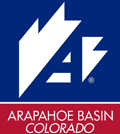Layering 101
There’s a fine art to temperature regulation on the mountain that takes time, experience, and above all, layers to master. Breathability is key in this three-part system that makes customizing your outerwear to meet the mountain’s conditions as easy as, well, 1-2-3. Let’s start at the bottom …
Baselayers
Technical fabrics are the way to go for your first and foremost layer, as cotton dries slowly and can stay damp and heavy throughout the day. A long sleeve layer that has a snug fit is key to any temperature, especially as technical baselayers are breathable, and allow for sweaty or snow drenched spots to dry quickly. Wool or synthetic fabrics are some of the best materials for your first layer, and are thin enough that they help regulate body temperature. Wool, in particular, makes for a great first fabric if you frequently find yourself chilly on the mountain, and has been a trusted fabric choice of alpinists for years.
Midlayers
Think of midlayers as an opportunity to customize your outerwear to the day’s weather. The key is technical fabrics, once again, that will continue the moisture-wicking process and help with insulation. A light, snug-fitting puffy is a great option for a chilly day on the mountain, with down or PrimaLoft being preferred fillers for a puffy jacket to be worn in between your first and outermost layers. Many of these light, puffy layers are ultra-compactable, which makes them a perfect layer to stuff in a backpack for the day in case the weather changes. For warmer weather, try another layer that’s similar to a baselayer with a little bit more weight to it- a merino wool sweater is often just enough to provide insulation for bluebird days with a chilly breeze.
Outerlayers
Your final layer should be a jacket- something that blocks wind, rain, snow, and has all the intangibles to keep dry and warm on the mountain. Breathability plays an important role in this layer too, as moving sweat away from your body is still key to the process of not soaking through any interior layers and cooling down throughout the day. Check out this informational piece from Evo.com, which offers a great explanation of breathability and waterproofing designations, and what you should be looking for when shopping for a ski coat. Fit plays an important role in this process as well, as your outermost layer should have enough room that other layers can fit underneath it and you can move around comfortably, without being too big, as loose fitting jackets aren’t as nearly as warm as a more fitted coat.
Featured Resorts

Killington Resort

Hunt Hollow

Pico Mountain

Mammoth Mountain

Palisades Tahoe

Arapahoe Basin

Aspen Snowmass

Sugarloaf

Sunday River

Big Sky

